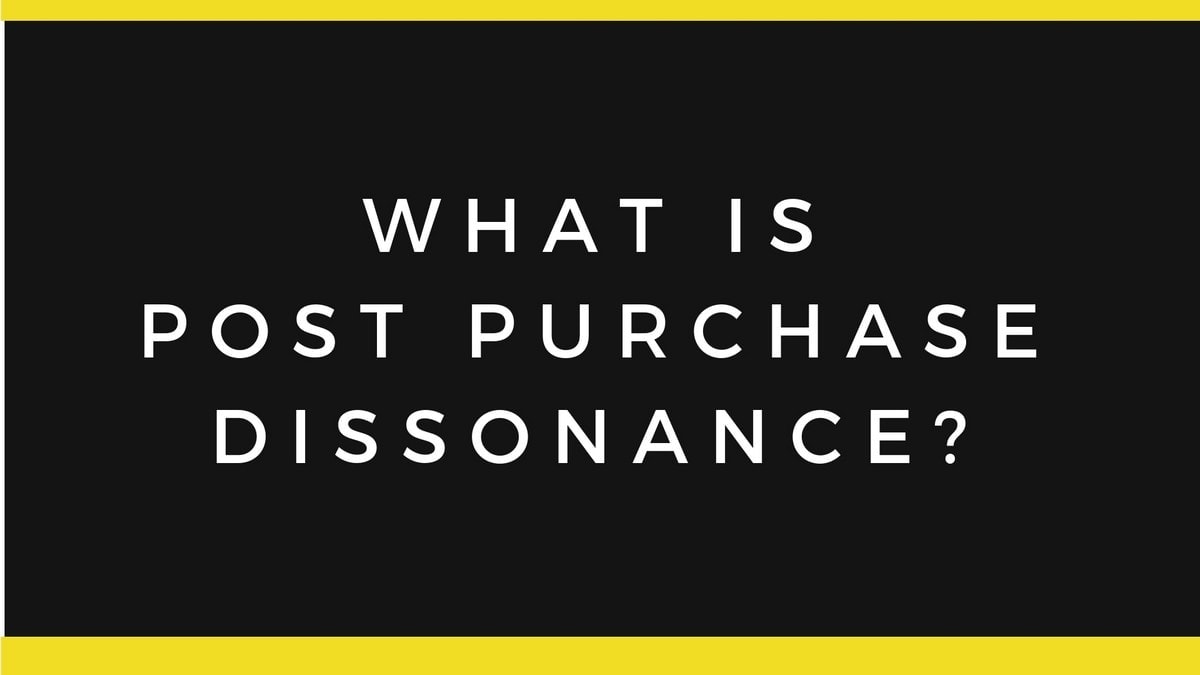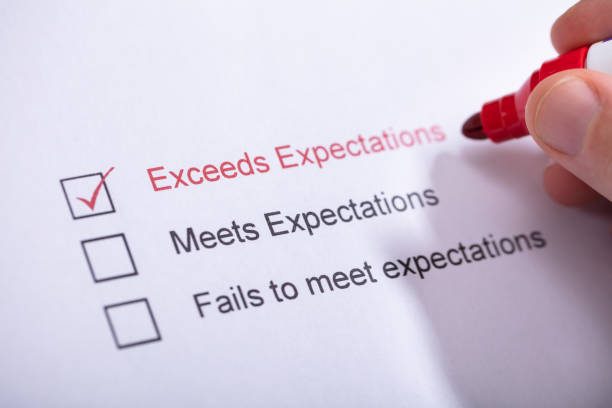Post-Purchase Dissonance And How To Avoid It
This information is designed to help you combat ‘post-purchase dissonance’ in the minds of your customers. And, as such, keep them happy with their original purchase and willing to come back to you.
You see, your job doesn’t end when someone purchases from you. In fact, it continues in full flight, particularly if you understand the importance of developing a ‘back end.’ And this is where it all starts.
Here you’ll find out what ‘post-purchase dissonance’ is, how it occurs, and what to do about it for your business.
Let the games begin!
You see after purchasing a product or service, a customer will be happy or dissatisfied and will act accordingly out there in your marketplace. Statistics show that happy customers tell some people, whereas unhappy customers tell almost everyone and anyone who will listen. As such how a customer feels after a purchase is almost as important as before!

‘Post-purchase dissonance’ literally means that the customer becomes unhappy with the purchase afterwards. Ever bought something and then for some reason felt like you’d done the wrong thing only days later? That’s post-purchase dissonance and most people have experienced it at one time or another. For some, it happens almost instantly.
Perhaps they suddenly feel guilty about spending money they shouldn’t have, or perhaps they get home only to find that their husband, mother, father, sister, best friend has a much better idea. Or maybe they see an ad for something else that sounds like the same product or service, only 10 times cheaper, and they didn’t know about it before they bought.
Post-purchase dissonance—people who have second thoughts about what they’ve just purchased—is common. Actually it probably happens more than we know and must be combated, ideally before it takes place.
It can also happen simply for this reason: Even though the person wanted the product or service and bought it, a team member serving them was just a little bit rude or unhelpful.
A simple example, leaving someone standing there waiting to be served while you talk on the phone. Or not approaching customers when they enter your business. Regardless, this can annoy people even after the fact and devalue the quality of your product or service and certainly their dealings with your business after the purchase.
Most people will analyse their decision after they’ve made it, wondering if it was the right choice, did they do the right thing, choose the right colour, and buy at the right price, in fact, right everything and anything. Thus, a system to help give them confidence in you and your products or services will really add to the WOW factor.
It will help build that bridge of confidence you need for people to refer work your way.
Further, post-purchase dissonance occurs when there is a difference in perception.
What determines whether a customer is happy or unhappy with the purchase will largely be a case of the product or service answering this question in their mind.
‘Did that product or service live up to my expectations of it?’
If the answer is yes, they’re happy and you’re happy. If not, you could be in real trouble unless you nip that dissatisfaction in the bud. Even better is to prevent it in the first place. We’ll come to that a little later.
If the product falls short of expectations, the customer will be disappointed.
Customers base their expectations on the messages they receive from you and your competitors, their friends and family, other associates and sources. If you or your competitors over-promise and under-deliver, the customer will become dissatisfied. That is, if you exaggerate the benefits or performance of the product or service, the customer’s expectations cannot possibly be met. And before you know it, you have a case of post-purchase dissonance.
The greater the difference between what they expected and what they received, the greater the disappointment and dissatisfaction and the more likely those customers will take action. The type of action will vary depending on just how disappointed the customer feels.
As such, it’s very important to make claims about your products and services that truly do represent the standard of quality and performance customers can expect.
Better to do that and have customers willing to purchase again, than to disappoint them and risk their communicating their disappointment to all and sundry.
Your customer’s best option—poison!
You see, a customer has a variety of options. The first and most obvious is never to buy from you again (an expensive option for you). The second is to talk about you in a negative way to every other person they know!

Statistics show that on average, a happy customer will talk positively with 3 people about the product, service, or your business. An unhappy customer, on the other hand, will talk with 11 people on average about your product or service or business. (In fact, one study showed that 13% of the people who had a problem with a business complained about the company to more than 20 people!)
When asked, every business owner will tell you that word of mouth is one of their greatest sources of business. The facts you just read show that negative word of mouth exists just as strongly. In fact, it can spread faster and farther than any of kind of promotion.
As a business owner or manager, you have to see why combating post-purchase dissonance is so important.
To illustrate the point, an example exists from what was a successful restaurant in a great location. Just one reported incident that travelled through the local communication chain cost the owners the business. At first, it was thought to be a rumour, but as more and more people repeated the story, more and more knew someone who knew someone who knew it to be true. And this negative word of mouth brought about the full closure of the restaurant! So the very same chain of communication that built the business and turned it into a raving success destroyed it in a matter of weeks. Not months or years mind you—weeks.
Now before you think ‘this could never happen to my business,’ some other, less aggressive form of post-purchase dissonance could be happening EVERY day and you could be none the wiser for it.
And that’s because other studies, interestingly, have shown that as low as 4% of people who are unhappy about a product or service will actually complain to the business itself. Most people find it less confrontational to talk with family and friends instead. With 96% of unhappy customers never complaining to the business, chances are that post-purchase dissonance is happening and it’s happening now to your business.
Customers could take all of these actions even farther. In particular, they could make public complaints to industry or government bodies, seek financial redress from your business, or take legal action.
To take this one step farther, consider too, that all your sales come from only 2 groups—new customers and existing customers who purchase again.
It could be affecting your profits
The second category—existing customers who purchase again—is incredibly important to the profitability of your business. You see, it costs 6 times as much to win a new customer as it does to have an existing customer purchase from you again. Obviously, then, keeping existing customers happy and buying from you again and again because of that satisfaction with your business will save you thousands.
Better yet, though, it will actually make you thousands as well. All the ‘costs of acquisition’ that is, everything it cost you to promote and win that new customer, are covered in the first sale. Every sale after that is therefore far more profitable.
Most businesses miss out on the opportunities brought to them by the second group simply because they don’t focus on meeting (let alone exceeding) the customer’s expectations. And then they fail to address post-purchase dissonance so that customers run screaming from the business, never to return!
These days, it’s about more than just meeting or satisfying customer expectations. It IS about exceeding them. Our aim is no longer to satisfy the customer, it is to DELIGHT them. Delighted people are truly happy, aren’t they? And what better people to be out there talking about you?
How to avoid it for your business

In two words: customer service.
Happy customers who feel they've been served well, received value for money and general all-round good service will often buy that product or service again, preferring to deal with someone they know. Also, they’ll often talk favourably to others about your business and your products and services, pay less attention to your competitors and their advertising, and may well buy other products and services from your business.
The key to a happy customer is customer service. Not just service but awesome service. Service that delights is what you want to offer.
Asking your customers for constant feedback on your products and services and your business is another way to avoid post-purchase dissonance in your business. Asking for feedback combats the ‘don’t ask, don’t tell’ policy held by most customers, where if you don’t ask them what they think, whether they’re happy or, more importantly here—aren’t—they won’t volunteer information.
Customer feedback helps you identify what you’re doing right and what you could improve from the most important point of view of all—the customer’s. To gather this feedback, you could set up a suggestion box or send out a short survey asking for your customer’s opinion after each purchase.
Many companies find their best ideas come from customers. After all, your customers know what they want. Once you have these ideas and feedback, it’s important to follow through and implement those worthwhile ideas that address any areas of concern for your customers.
That way, you’ll constantly be improving your business to meet your customers’ needs.
This gathering of feedback could occur through other means, too, such as a Client Advisory Board,’ where you invite a group of customers to talk about your business and the service they’ve received. This means you constantly have your finger on the pulse of your business and can change it accordingly.
Gathering feedback can mean you do what we’ve mentioned before—nip any dissatisfaction in the bud. You see, if someone is unhappy and you ask them their opinion, this can be considered a show of good faith. In fact, you’ve shown them you really are interested in making them happy just by asking for their feedback. In many cases, you might not need to do anything else except address their concerns, and the issue could be completely solved.
Follow-up actions are another great way to combat post-purchase dissonance BEFORE it even begins. These items are solely designed to make customers feel good about their purchases.
Look at your product or service. What concerns are your clients likely to have that you could quell for them up front? For example, could you make a follow-up call a week or so later to check that they’re happy with everything? Or to remind them to call if they have any problems whatsoever? Doing this sort of follow-up makes the customer feel more confident in their choice to go with you and your business. You then begin to form a relationship over and above being seen as just ‘the sales person.’
Say you buy a new product, a security system. In the first few weeks, a few things may happen, like a false alarm because you left the window open or an emergency call because you entered the wrong code. All of these issues could lead to frustration with the product. However, if you had been properly taken care of, perhaps given a report on the ‘12 most common security problems and how to fix them in your home,’ or called a few days after installation to check that everything was OK, you would once again feel you did the right thing.
And in a service-providing business, you can achieve this by regular newsletters. Articles about other successful clients, ‘success stories,’ new ideas hot off the press. Keep in touch and remind them why you and your service are so good.
These tools apply whether a customer has taken delivery of an item or simply ordered it. In the first instance, it reassures them. In the second, it reassures them AND recommits them to that order.

For example, sending a thank you note immediately after a purchase can make a world of difference. This makes the customers feel like you really did genuinely care, and you appreciate that they had a choice.
Even better, send a congratulations on purchasing your new product or service’ letter. This letter might go on to make a couple of points to reassure the customer that they’ve made the right decision in buying the product or service. And you must actually congratulate them. Ideally, this thank you note or congratulations letter should reach the customer as soon as possible after purchase.
That way, there is less time for the post-purchase dissonance to set in because they’ve been reassured of their purchase. These sorts of tools have been proven to reduce product returns and order cancellations.
Sending an article written favourably about the product or service to customers who have recently purchased can do the same. For instance, an industry-specific magazine, like Wheels for the car industry, might give a ‘Wheels Top 10 Cars of the Year’ and a ‘Wheels Car-of-the-Year Award.’
If that certain type of car was selected, dealers should be sending out a copy of the article to customers who bought from them in the last 6 months or who indicated interest. It’s a gesture that helps retain the relationship and helps the clients remember that they made the right choice with your help.
Sending their warranty or guarantee cards and reiterating that guarantee is another great way to make sure customers are happy. Another great idea is to send a ‘how to get the most out of your [product or service]’ or a written instruction booklet and video. Some businesses could even send testimonials from other happy customers, saying ‘our only hope is that you are as happy as these customers.’
Some car companies make great use of all these tools. Many will send a feedback form or survey after a purchase. Others will send a letter of congratulations for having made a great selection. Others will remind customers of free car wash services at the dealership, and so on.
Another post-purchase action that can make all the difference is to follow up that letter or thank you note with a phone call. A phone call that is entirely designed just to make sure they’re happy and ask for their feedback. This is an inexpensive and very customer-friendly service.
Whatever it is, be sure to do something that reassures the customer and makes them feel they’ve done the right thing!
If you're an ambitious business owner looking to boost your current results or if you're looking to get your business off to a flying start we invite you to contact us today. You can expect practical business, tax, marketing and financial advice that could have a profound effect on your future business profits. To book your FREE, one hour introductory consultation simply call us on (03) 9326 1244 or complete your details in the box at the top of this page and we will be in touch.














